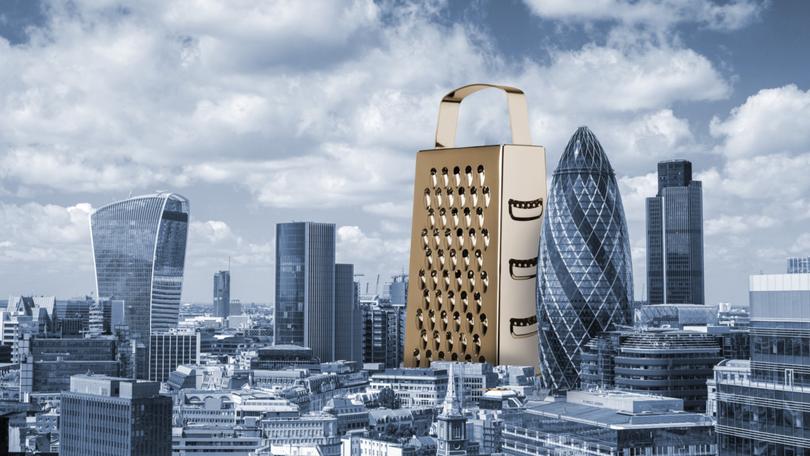THE ECONOMIST: The business of nicknames When they help brands and employees. And when they hurt

The Can of Ham cannot find a buyer.
It may be hard to see the Gherkin because the Walkie-Talkie and the Cheesegrater get in the way. London’s skyline is made of glass, steel and nicknames. Sometimes these names start out as criticism: the city’s tallest building got its name when it was described as a “shard of glass through the heart of historic London” by a heritage group.
But in time, they denote familiarity and, often, affection. On December 13 the City of London approved plans for a new skyscraper that will be as tall as the Shard; the chances are high that it will eventually wind up with a sobriquet based on its shape.
Sign up to The Nightly's newsletters.
Get the first look at the digital newspaper, curated daily stories and breaking headlines delivered to your inbox.
By continuing you agree to our Terms and Privacy Policy.There are good reasons why buildings acquire monikers. The Bottle Opener resonates more than the World Financial Centre Shanghai; the Lipstick Building is easier to remember than 885 Third Avenue. Consumers give brands nicknames, too. BMW owners in Britain drive “beamers”; in America, they might be at the wheel of a “bimmer”.
If you’re a high-roller, you might wear a Rollie on your wrist. You probably would not shop at Tarjay, an ironically Gallic pronunciation of Target, a mass-market retailer. Athletes’ nicknames can become brand-like.
LeBron James, a basketball star, successfully opposed an attempt by a cruise liner to trademark “King James”.
Brand nicknames are not always flattering: Neiman Marcus, another retailer, was once christened “Needless Markup”.
But usually they suggest that consumers feel a genuine connection to a product. In a recent paper Zhe Zhang of Western University in Canada and Vanessa Patrick of the University of Houston looked at how people react to the use of nicknames by other consumers. In one experiment participants saw an online review of a new menu item at McDonald’s; some saw a version in which the chain was referred to by that name and others saw one that called it “Mickey D’s”.
The chances that the review would be reported as fake were much lower when the nickname was used. A nickname also made other people more likely to buy a product or pass on the review to a friend.
Mr Zhang and Ms Patrick tested whether these same beneficial effects would also materialise if the firm used its nickname in its own communications (by showing people messages in which, among other things, Walmart referred to itself as Wally World).
The benefits disappeared. Nicknames that seem to genuinely reflect consumers’ fondness for a brand can send a positive signal. But companies referring to themselves in this way feels inauthentic. Imagine someone called John saying that people call him “J-Dawg”, and you can understand why.
Nicknames are part and parcel of many workplaces, too. In a new paper, Mr Zhang and Shuili Du of the University of New Hampshire found that 87 per cent of the employees they surveyed had encountered nicknames at work.
Some occupations are awash with banter: one guide to Australian building sites has a long list of common nicknames that includes “wheelbarrow” (only works when pushed), “broken arrow” (doesn’t work but can’t get fired) and “deck chair” (always folds under pressure).
Workplace nicknames are sometimes unpleasant. But even if a nickname is meant as a mark of affection, it matters who coins it. The difference between monikers among friends and nicknames at work is that companies are hierarchies. In their paper Mr Zhang and Ms Du look into the differences between upward nicknaming, when workers christen a boss, and downward nicknaming, when the reverse happens.
In one experiment, they asked participants to imagine a scenario in which a worker refers to their boss as “Panda” because of a tendency to dress in black and white. Other participants were told to imagine a boss calling an employee by the same nickname for the same reason. People associated the use of this nickname by the boss with a lower concern for employee welfare and less psychological safety, among other things; when the nickname was given to a manager, it was associated with a greater sense of well-being among staff.
For managers, the lessons ought to be apparent.
Nicknaming is a natural habit; it can often be a positive one. If the new skyscraper in London does not get a moniker, it will almost certainly be because it is boring. But the best nicknames emerge from the bottom up. Brands should be careful about using them.
Bosses should stamp on them if they are causing distress — but otherwise leave the name game to others.
